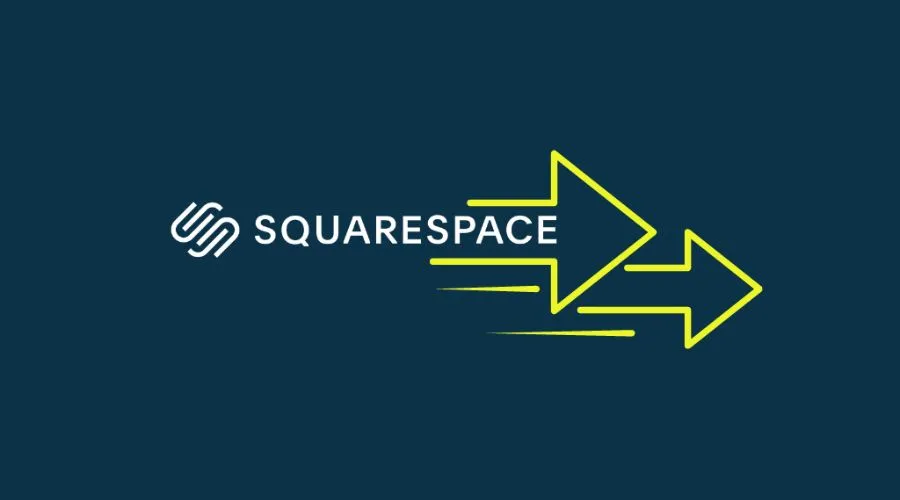Web performance refers to the quality of the user experience on a website, both as measured and as viewed by the user. Website speed and reliability are especially important.
There are several things that website owners and developers can do to make their sites run faster. Some of these website speed optimization tips are choosing good hosting, content caching, and load balancing providers, as well as optimizing web design elements like picture sizes, code formatting, and the use of external scripts.
Pages that load faster and more reliably not only give users a better experience, but also tend to rank higher in organic search results, be seen by more possible visitors, and often have higher conversion rates.
For website speed optimization service, check out Squarespace now!
How To Test Website Performance
Finding out how well a website is doing now is an important first step in making it better. Many things affect how users and other people think about a website’s speed and dependability. Measuring these website speed optimization tips is the only way to know what actions will make the biggest difference.
For website speed optimization tips, visit Squarespace!
Website Speed Optimization Tips For Squarespace Site

Let’s explore some website speed optimization tips here.
-
Reducing your page size for faster loading
Squarespace takes several steps to make sure that sites load quickly, but the content you add to your site will affect how quickly it opens. For instance, pages with many pictures may take a while to load, especially on phones and connections that aren’t very fast. Each page on your site should be 5 MB or less as much as possible.
Check the page loading speed
You can use different tools or your browser’s built-in inspection tool to get an idea of how long it takes for your site to load. For instance, with Google Chrome, you can do the following.
- Start up Developer Tools.
- Go to Network and click it.
- To see the load time, refresh the page.
Google PageSpeed Insights is another tool that can be used to check how long it takes for a site to load. If you want to make a site that isn’t built with a CMS, this tool is perfect for you. PagesSpeed Insights can give wrong results for Squarespace pages that use a CMS. If this tool gives you an error, it doesn’t always mean there’s a problem with your page. Each page on your site should be 5 MB or less as much as possible.
2. Check your page size
Check the page size if it takes too long to load.
Chrome Developer Tools are one way to do this.
- Start up Google Chrome. Close the Squarespace window or open a new private window if you are already logged in.
- Start a new tab.
- Open up the Chrome Developer Tools.
Quick cuts:
⌘ + Option + J on a Mac
Use Ctrl + Shift + J on Windows.
- Open the page you want to look at in the same tab. The Developer Tools should always be open.
- Pick up Developer Tools and go to the Network tab. If there’s nothing in this tab, try refreshing the page.
- Check the size of the whole page at the bottom of the screen. As you can see below, it says “1.0MB transferred.”
- Click on the Size column to arrange the text on the page by its size. This shows which parts of the page use the most memory and might be making it load more slowly, especially on phones. Most likely, the bigger material will be pictures. To see the picture, click on the file name.
A page should be no more than 5 MB in size. For cell phone connections, 1 MB is the safest number. If your page size is too big, read our tips on how to make it smaller. Check Squarespace to know more!
2. Reduce your page size

- Another website speed optimization tips is to make sure that each page doesn’t have more than 60 blocks. See Getting rid of blocks to get rid of a block from a page.
- If the page covers more than one subject, you should divide it into several pages. These changes can also help people find the information they need on your site and boost its SEO.
- Cut down on the number of movies. Videos from YouTube or Vimeo that are embedded can make pages take longer to load, especially on phones. Instead, put the movies on different pages and use links to help people move from one page to the next.
- Blog excerpts are a better way to show teasers for each post than the full text of the post if your blog home page takes a long time to load. Additionally, you can turn on AMP to make posts load faster on phones.
- Cut down on the number of sections on your site, especially sections with galleries, if it uses stacked index pages (version 7.0).
Check out Squarespace for the best website speed optimization!
3. Disable Unnecessary Add-ons
If you don’t need tools like Adblocker or SEO plugins, they could slow down your site’s speed. So, to make your site load faster, we suggest that you turn them off. Check Squarespace to learn more website speed optimization tips!
4. Enable AMP To Load Blog Page Faster

Rapid AMP Pages (AMP) make it possible for web pages to load more quickly on phones. Thank goodness Squarespace gives you this choice. In short, AMP makes websites more mobile-friendly and improves the user experience.
Keep in mind that AMP only works on blog pages. It’s not available on any other pages on your site.
To make this choice work –
- Click on “Settings.”
- Choose “Blogging” from the menu on the left.
- Turn on the “Use AMP” button.
Visit Squarespace for website speed optimization tips!
Conclusion
Waiting is not fun for anyone. Quick answers are what everyone wants. So, these changes have to be made. Also, Squarespace version 7.1 already has tools that make pages load quickly. It’s nice to use the most recent version of Squarespace. To make your Squarespace site as fast as possible, you can also check third-party name providers, local networks, and your computer’s memory.
Explore website speed optimization tips with Squarespace now!
For more information, visit Noblepuma.





